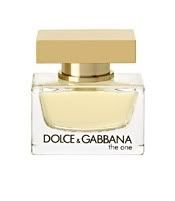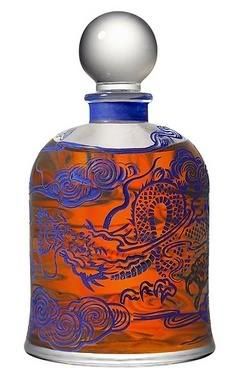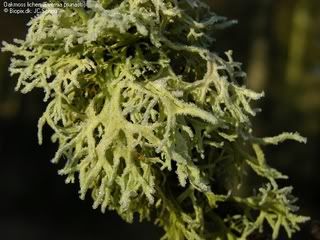
Their lyrics for their song "One" however seem very a propos to our subject today, Dolce & Gabbana’s The One.
“Is it getting better?
Or do you feel the same?
Will it make it easier on you,
now you got someone to blame?”
No, no, I don’t blame anyone. It’s all good anyway.
Dolce & Gabbana have just come out with The One. A floral-oriental that they told us aimed to appeal to a “real diva, an object of desire, like the woman represented by Brazilian top model Gisèle Bündchen as seen through the lens of photographer Jean Baptiste Mondino”. In that regard the perfume is going for sensuality, presence, passion. As Osmoz bombastically states quoting the press release: “Every woman is The Woman: (…) You want her to be unique, ‘the one’: spectacular, joyful, ironic, strong and passionate, and always – indubitably – herself’.
Taking into account that D&G’s leitmotif is of a romantic inclination with interjections of “mama Italia” in Anna Magnani neorealistic style, it doesn’t surprise me that they have been quite successful. Their rich, mature and quite old-fashioned opulence that met with great success was named Pour Femme (codenamed “red cap”; reminds me of a Russian spy code or something in a bad B-movie about the Iron Curtain- practical though). Their smashing best-seller, especially in mediterranean countries, Light Blue turned my own personal lights blue from the ubiquity with which I encounter it on every single female of reproductive age come spring and summer. Sicily, their aldehydic soapiness of a sheer veil is getting discontinued I hear and it’s a pity, if only –as I never “got it”- because I won’t get to watch any longer the [[url=http://www.youtube.com/watch?v=P7YkgNbYb9g]]glorious b/w TV commercials of Giuseppe Tornatore [[/url]] (click to watch)featuring the succulent tormented beauty of widow Monica Belucci weeping for her dead husband; her old-fashioned slip laced with Sicily taken secretly away by a young admirer.
The rest of the Italian duo’s line includes the dependable virility of Pour Homme, the playfull By permutations (surely not with a sexually charged undercurrent, I hope) and the lighter, younger D&G line with feminine and masculine versions.
A new launch was needed and The One it was. Featuring the long maned Gisèle Bündchen, poster girl of picture-perfect sensuality in westernised standards, it promised to be diva-like. I can front out vouch for its un-diva, completely wearable and friendly character, nevertheless. Maybe the male dominating photographer [[url=http://grrrlcott.wordpress.com/2006/10/18/dolce-gabbana-the-one/]]in the ads [[/url]] is a pre-taste of its submissive character.
“Did I disappoint you?
Or leave a bad taste in your mouth?”
Assuredly not, honey. Just a taste of a déjà -vu. Just that.
Its great flaw, especially for something bearing such a moniker, is a lack of individuality, of uniqueness.
Oh, how I wish it were a case of
“Have you come here for forgiveness?
Have you come to raise the dead?
Have you come here to play Jesus?
To the lepers in your head…”
But it wasn’t meant to be The One to end all others. After all I have found my personal One long, long time ago and I fervently believe that perfumes, like books, like art, like love, choose us and not the other way around.
The bottle is a designing success: very austere and contemporary, a spare squatty affair with a gold geometrical cap to accompany the light gold of the jus inside. Substantial and no nonsense. Luxury without ostentatiousness. The official notes are: Mandarin, bergamot, litchi, peach, jasmine, lily, lily of the valley, plum, vetiver, amber, musk
The opening stage of The One emits tangy sweet fruitness of discernible bergamot and mandarin, accompanied by lactonic interlays of peach, rendering the top very fruity indeed. Lily is the dominating floral force during the middle phase of the journey on skin, with its sweetness balanced by the tartness of the fruits. Jasmine also makes an appearence, but interwoven with the other notes. No vetiver discernible to me in the base however, which is redolent of the nuzzling warmth of a sweet vanillic amber coupled to the softness of a clean slightly powdery musk of average lasting power.
The whole has an uncanny way of reminding me of the very pleasant but not earth-shattering quality of the thankfully slightly drier Cinema by Yves Saint Laurent, launched just 2 years prior to The One. Has short-term memory loss become so prevalent in everyday life that designers and noses are inspired not by legends of the past but by products of such a recent crop?
The One is tarter in the first stages and lacks the almondy flower note, but they then segue on to comparable pathways, a sort of “Elective Affinities” for those who are too fluffy to study Goethe in the first place.
And come to think of it, I prefer Cinema by an inch.
Perhaps as U2 would have said:
“I have kissed honey lips
Felt the healing in her fingertips
It burned like fire
this burning desire.
But I still haven’t found what I’m looking for”.
Nice try though, Dolce & Gabbana. And I mean this?
You can see the whole range [[url=http://www.mistrys.co.uk/dolce-gabbana-the-one-for-women-eau-de-parfum-natural-spray-p-1625.html]]here[[/url]]. Bottles of Eau de parfum come in 50 and 75ml versions, there is also a shower gel, deodorant spray and body lotion.
Pic comes from osmoz.com
.jpg)









.jpg)